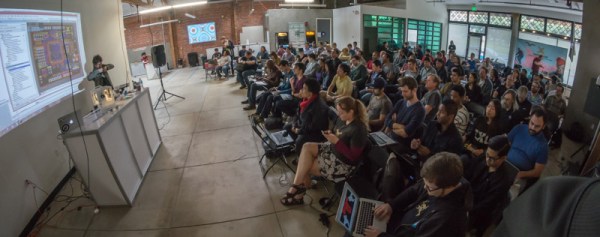A few weeks ago, the folks at the 23b hackerspace held Sparklecon, an event filled with the usual infosec stuff, locks and lockpicking, and hardware. A con, of course, requires some cool demonstrations. They chose to put a pickle in an arc welder, with impressive results.
This build began several years ago when the father of one of 23B’s members pulled off a neat trick for Halloween. With a cut and stripped extension cord, the two leads were plugged into a pickle and connected to mains power. The sodium in the pickle began to glow with a brilliant orange-yellow light, and everyone was suitably impressed. Fast forward a few years, and 23b found itself with a bunch of useless carbon gouging rods, a 200 Amp welder, a pickle, and a bunch of people wanting to see something cool.
The trick to making a pickle brighter than the sun was to set the arc just right; a quarter of an inch between the electrodes seemed optimal, but even then pickle lighting seems very resilient against failing jigs made from a milk crate, duct tape, and PVC. Video (from the first Sparklecon, at least) below.
Continue reading “Sodium Pickle Lights” →














